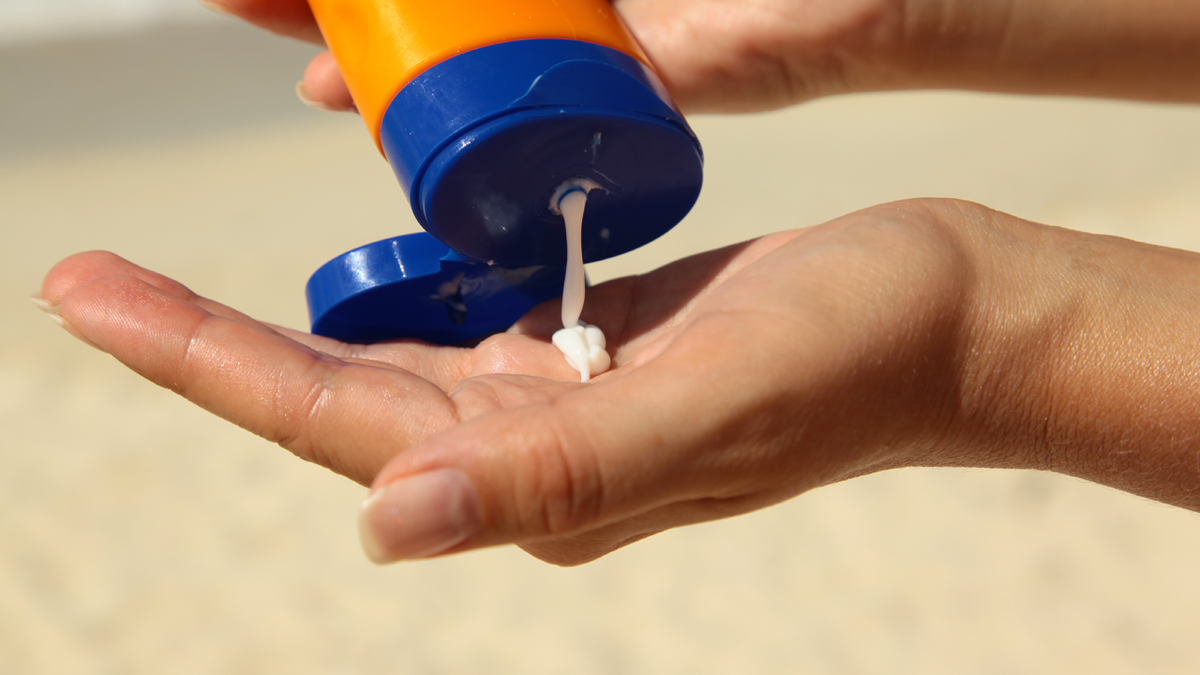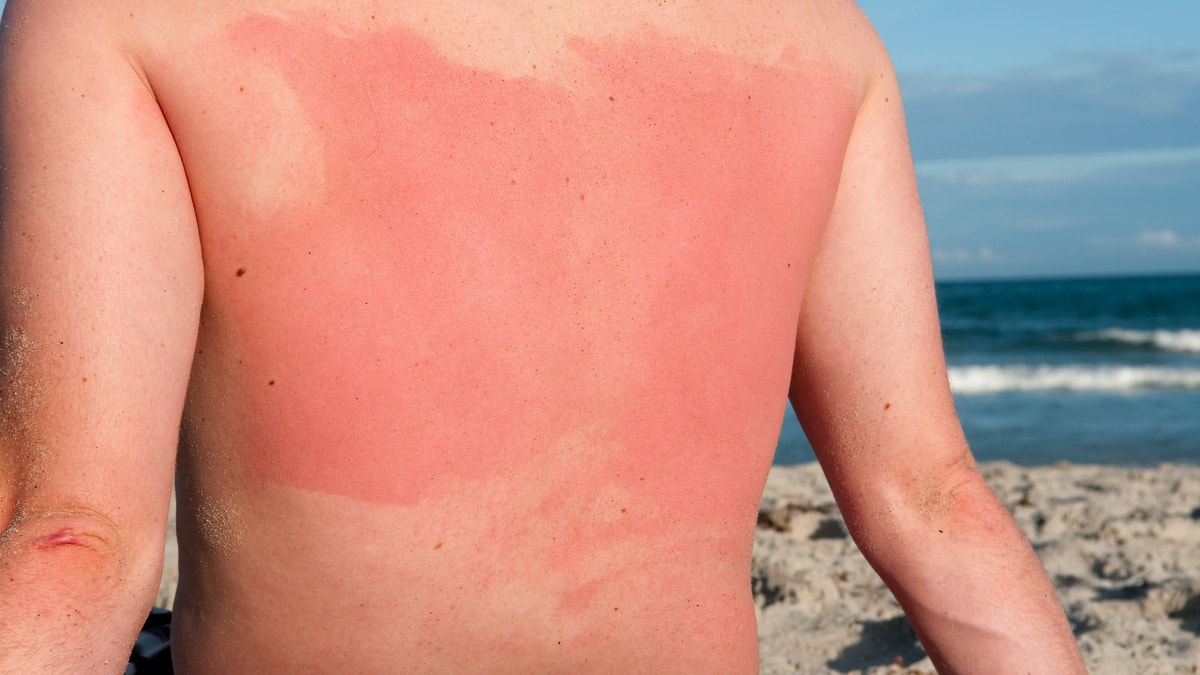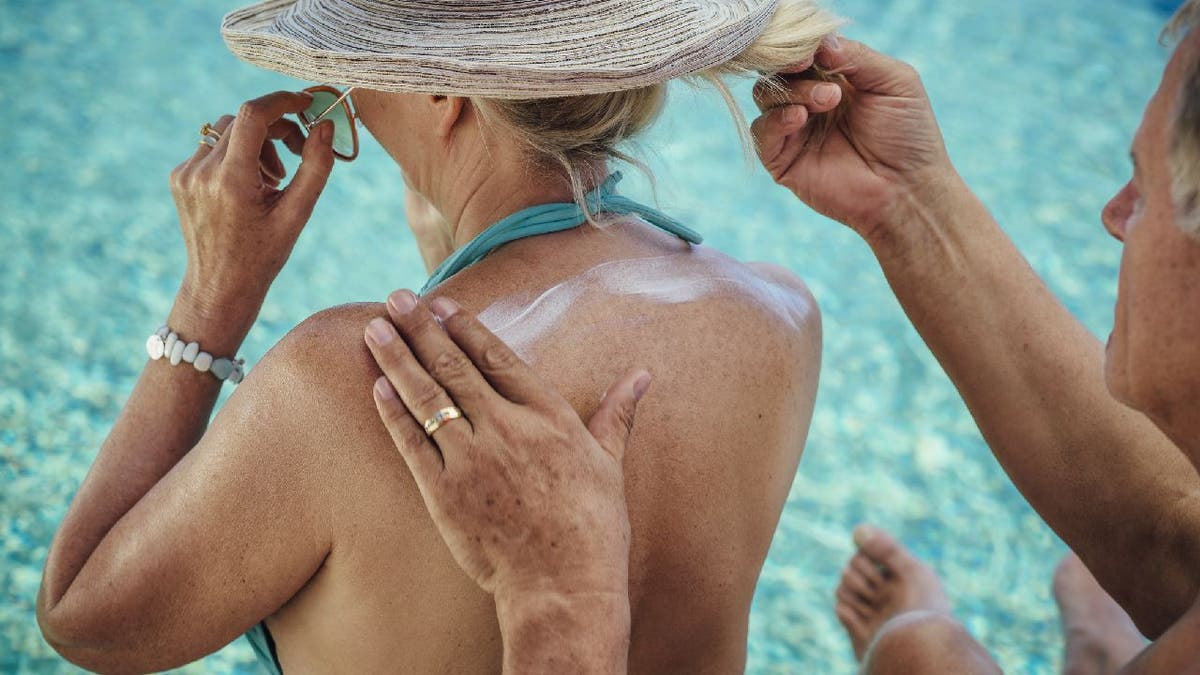An afternoon of fun in the sun can quickly turn into days of pain and itchiness if you're not prepared.
The culprit? Sunburn. And it's no laughing matter.
It can turn a dreamy vacation into a painful nightmare. It’s important to know steps on how to prevent sunburn, but also how to cure it when the inevitable happens.
If someone has had more than five sunburns, his or her risk of melanoma roughly doubles, the Skin Cancer Foundation says.
WHAT IS SKIN CANCER? HOW TO SPOT THE SIGNS AND WHEN TO SEEK HELP
Melanoma is a less common skin cancer type, accounting for less than 1% of cases, but it can turn deadly if it spreads to other body parts.

Choose a sunscreen with an SPF of at least 30 to best protect your skin against the sun. (iStock)
Below is what you need to know about sunburn and what you can do if you get sunburn.
- What exactly is a sunburn?
- How does the body try to fight against sun damage?
- What about tans? Are those considered sun damage?
- What can I do to lower my risk of sun damage?
- I've already got a sunburn. What should I do?
- Is there anything people can do to reverse sun damage once it’s been done?
1. What exactly is a sunburn?
A sunburn is the body's response to overexposure to ultraviolet (UV) light.
Exposure to the sun's UV radiation has been associated with approximately 90% of nonmelanoma types of skin cancer, the Skin Cancer Foundation says.
The sun also causes most melanomas.

Sunburn can be extremely painful, especially in severe cases. (iStock)
One in five Americans will develop skin cancer over a lifetime, according to the foundation.
2. How does the body try to fight against sun damage?
The body increases the production of melanin, which is pigment that determines the color of hair and skin, according to the American Association of Dermatologists (AAD).
In general, sunburns happen to people with less melanin, while those with more of it may tan, the group explains.
WHAT SPF SHOULD YOUR SUNSCREEN HAVE? FIND OUT HOW IT MAY HELP PREMATURE AGING AND SKIN CANCER
With sunburn, skin cells are damaged by UV rays, and the body sends blood to where it has been hurt. So, it causes skin to appear red and feel hot, the Food and Drug Administration says.
The itchiness and peeling associated with sunburn is a result of white cells getting rid of the cells that have been damaged, according to the agency.
3. What about tans? Are those considered sun damage?
Yes. "There is no such thing as a safe tan," the FDA warns, explaining on its website that a tan is a sign of skin damage.

Even a tan is a sign of skin damage that could affect your body in the future. (iStock)
That’s why it is so important to wear sunscreen with at least SPF 30 to protect your skin.
4. What can I do to lower my risk of sun damage?
To lower your risk of sun damage, wear sunglasses and broad-brimmed hats while outside, use a broad-spectrum sunblock with an SPF of at least 30 and avoid the sun from 10 a.m. to 4 p.m., the American Cancer Society advises.
CLICK HERE TO SIGN UP FOR OUR LIFESTYLE NEWSLETTER
If you're starting to feel your skin getting warm and burned, try to seek shade when possible to avoid spending long periods of time in the sun.
5. I've already got a sunburn. What should I do?
Sometimes sunburns are simply hard to avoid. If you do find yourself with a sunburn, you can try taking cool showers, moisturizing with products featuring aloe vera and soy and taking a pain medication like aspirin, the AAD says.
If you have blisters, do not pop them.

Applying sunscreen frequently is important while spending time outside. (iStock)
6. Is there anything people can do to reverse sun damage once it’s occurred?
"The truth is, the skin has a long memory," dermatologist Dr. Lisa Chipps says on the Skin Cancer Foundation website, explaining that sun damage is "more or less permanently recorded in it."
CLICK HERE TO GET THE FOX NEWS APP
She suggests using a topical retinoid like tretinoin and trying laser treatments.
People can also try methods like microdermabrasion, chemical peels and topical antioxidants.

